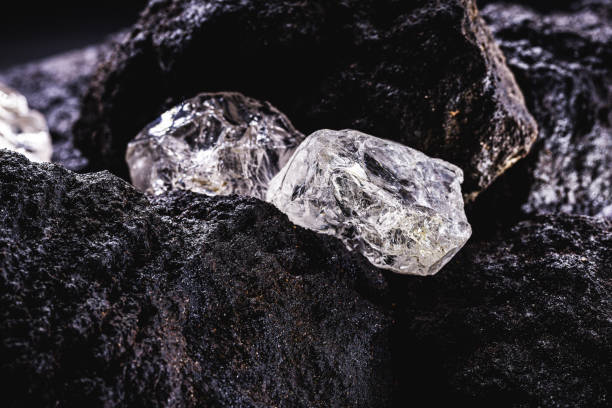nightglow.info – Diamonds, known as the epitome of luxury and love, have fascinated humanity for centuries. Their journey from a rough stone to a dazzling sparkler is a testament to human ingenuity and the relentless pursuit of beauty. This transformation is not just a process of cutting and polishing; it is a meticulous journey that involves science, art, and a deep understanding of the diamond’s unique characteristics.
The Origin of Diamonds
The story of diamonds begins deep within the Earth, about 100 miles below the surface, where extreme heat and pressure transform carbon into the hardest natural substance on Earth. These conditions, which can reach up to 2,200 degrees Fahrenheit and 725,000 pounds per square inch, are what give diamonds their unique properties.
Mining and Extraction
Once formed, diamonds make their way to the Earth’s surface through volcanic eruptions, where they are found in kimberlite or lamproite rocks. The mining process is both extensive and complex, involving open-pit mining, underground mining, and alluvial mining. Once extracted, the rough diamonds are sorted and valued based on their size, quality, and potential.
The Art of Diamond Cutting
The journey from a rough stone to a sparkling diamond begins with the art of cutting. This process is crucial as it determines the diamond’s final beauty and value. Skilled craftsmen, known as diamond cutters, study the rough diamond to determine its best possible shape and cut. This decision is influenced by the diamond’s clarity, color, and the placement of its inclusions.
Polishing the Diamond
After cutting, the diamond undergoes polishing, a process that brings out its brilliance and fire. Polishing is done using a flat, circular metal disk or wheel, coated with diamond powder. The diamond is held against the wheel, and through friction and abrasion, the surface becomes smooth and reflective.
The Final Touch: Symmetry and Proportion
The final stages of diamond transformation involve symmetry and proportion. A well-cut diamond is symmetrical, with equal angles and sizes for its facets. Proportion refers to the depth and table size of the diamond, which affects its light performance. A diamond with ideal symmetry and proportion will reflect light beautifully, creating the sparkle that is so highly prized.
Ethical Considerations
In recent years, the diamond industry has faced scrutiny over ethical concerns, particularly regarding the sourcing of diamonds. The term “blood diamond” or “conflict diamond” refers to diamonds mined in war zones and used to finance armed conflicts. To address these concerns, the Kimberley Process Certification Scheme was established in 2003 to prevent conflict diamonds from entering the mainstream market.
Conclusion
The journey from a rough stone to a sparkling diamond is a remarkable process that combines science, art, and ethics. Each diamond tells a unique story, from its formation deep within the Earth to its transformation into a symbol of love and commitment. As consumers become more aware of the ethical implications of diamond sourcing, the industry continues to evolve, ensuring that the beauty of diamonds is not overshadowed by their origins. Diamonds, indeed, are not just stones; they are a testament to the enduring human quest for beauty and perfection.
